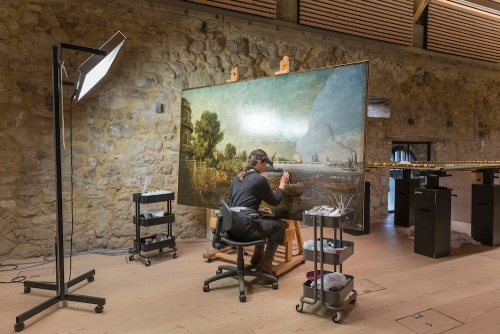
Camera Carries ‘Exceptional Clearness’ To Rebuilding Of Notable Works Of Art
Conservators will be able to completely identify and remove aging varnish thanks to a new technology developed by scientists that will revolutionize the restoration of historic works of art.
Prof. Klaus Suhling said that a team in the physics department at King’s College London has used fluorescence to give the conservation process “unprecedented clarity.”
Experts will be able to tell the difference between varnish and other parts of an artwork, like paint and binders, thanks to a revolutionary camera.
Suhling stated, “The conservation of paintings is essential to protect our cultural heritage for future generations.”
“Most compositions made before the late nineteenth century have been stained commonly, causing them to seem dull or yellowed as the stain corrupts. To make the picture noticeable once more, it could be important to eliminate that stain – however it very well may be a major test to separate this from the hidden paint and different parts inside the work of art.”
The Lord’s School group fostered a 25,000-pixel photon delicate camera that utilizes a method called plainly visible fluorescence lifetime imaging (FLIM) to bridle the normal fluorescence in extremely old stain.
Every pixel has a stopwatch that actions when the light from a surface enters it. ” We can chart where varnish sits with an accuracy never before achieved by comparing the varnish’s fluorescence to these other components,” Suhling stated.
Generally conservators sparkle UV lights on the outer layer of a composition to determine buildup by eye. The method is based on the conservator’s expertise and involves some guesswork.
Suhling and Dr. Jakub Nedbal led the King’s College team, which collaborated on the project with the Courtauld and the University of Edinburgh.
The new method “provided more detailed information about the paint and varnish during removal tests than any other previous method, paving the way for whole painting imaging during varnish removal,” according to Courtauld professor Aviva Burnstock.
“That would be a great advance for painting conservators if achieved.”
Because it was derived from consumer technology like smartphone cameras, Suhling stated that production of the camera would not be costly in the future. It is very individualized right now, but I believe it will be relatively inexpensive in the future.
In medicine, fluorescence is usually used to study, track, and find cancerous cells. It is likewise utilized in polymer banknotes as a safety effort.
Suhling said he was a normal guest to craftsmanship displays. ” I was quick to utilize my aptitude to propel preservation work.”
Disclaimer: The views, suggestions, and opinions expressed here are the sole responsibility of the experts. No Research Raptor journalist was involved in the writing and production of this article.